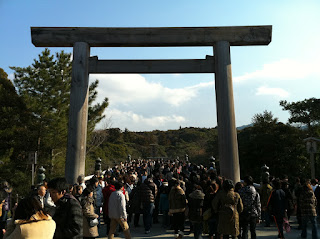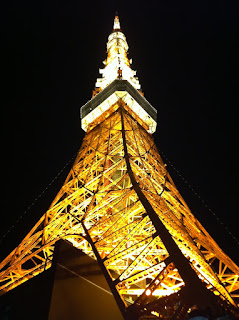not a day goes by when i dont shake my head in frustration and exclaim in defeat, "日本語は難しい ('nihongo wa muzukashii', japanese is difficult)!!!" i constantly find myself unable to say what i want. i often dont understand what teachers and students tell me. its very frustrating. but the truth of the matter is that japanese is not difficult; its just ridiculously hard for westerners to adjust to.
i think that english and japanese are near polar opposites of each other. when written, they use completely different sets of characters. when spoken, they use different phonemes - some of which dont exist in the other language. there are a million differences between the two languages, but i think the best way to show just how different they are to each other is to focus on the word order. constructing and understanding sentences in japanese is difficult for english speakers because the words are often in the opposite order.
here is a perfect example of the exact opposite word order:
for demonstration purposes ill group and number things:
then ill reverse the order:
thus arriving at the proper japanese word order:
this is why i think its very difficult for westerners to learn japanese. and to be fair, this is a big challenge for easterners learning english too. japanese is english in reverse, and vice versa. the difference in languages does more than just force us to read and write sentences backwards, it actually forces us to modify our thought process and start thinking in reverse.
i think that english and japanese are near polar opposites of each other. when written, they use completely different sets of characters. when spoken, they use different phonemes - some of which dont exist in the other language. there are a million differences between the two languages, but i think the best way to show just how different they are to each other is to focus on the word order. constructing and understanding sentences in japanese is difficult for english speakers because the words are often in the opposite order.
here is a perfect example of the exact opposite word order:
"did you watch the news about the rodeo on tv last night?"
「昨日の夜テレビでロデオについてのニュースを見ましたか。」
「昨日の夜テレビでロデオについてのニュースを見ましたか。」
for demonstration purposes ill group and number things:
(did)1 you (watch)2 (the news)3 (about)4 (the rodeo)5 (on tv)6 (last night)7
then ill reverse the order:
(last night)7 (on tv)6 (the rodeo)5 (about)4 (the news)3 (watch)2 (did)1
thus arriving at the proper japanese word order:
"last night on tv the rodeo about the news watch did?"
this is why i think its very difficult for westerners to learn japanese. and to be fair, this is a big challenge for easterners learning english too. japanese is english in reverse, and vice versa. the difference in languages does more than just force us to read and write sentences backwards, it actually forces us to modify our thought process and start thinking in reverse.
Wednesday, January 26, 2011 |
Category: |
2
comments




















